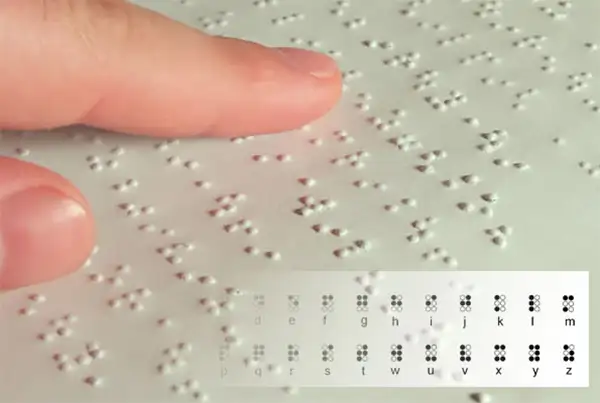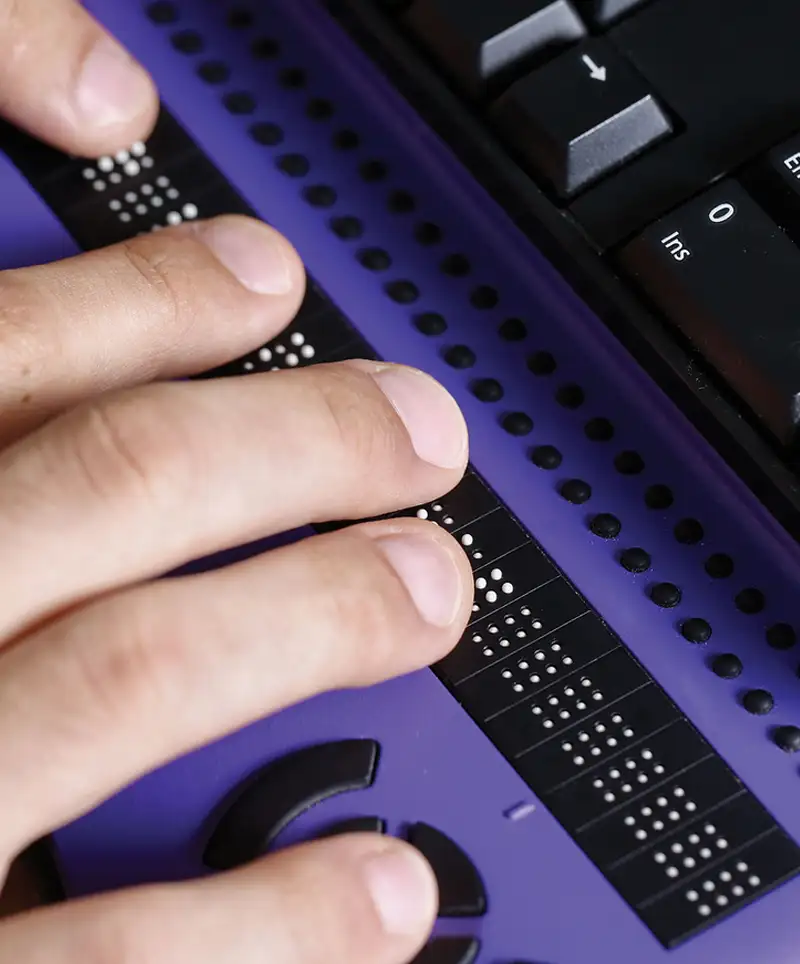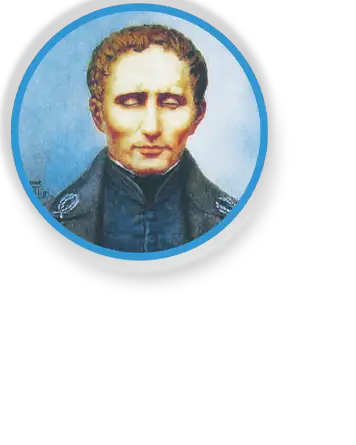The Brilliance of Braille
World Braille Day, celebrated each January 4th, isn't just a date on the calendar; it's a global high-five for accessibility and inclusion. Marking the birthday of Louis Braille, a Frenchman who, after a childhood accident left him blind, didn't just sit back and listen to the world go by. Instead, he invented Braille at the tender age of 15, revolutionizing the way visually impaired people interact with the written word.
The Braille System
The Braille system, often perceived as a mysterious array of dots, is in fact a brilliantly designed tactile language that has opened up the universe of written communication to those unable to see. It's a code that transforms the tips of your fingers into eyes, reading stories, understanding signs, and grasping knowledge that was once out of reach.
Origin and Design: The system was devised by Louis Braille in the early 19th century. This revolutionary concept was based on a tactile military code called night writing, developed by Charles Barbier for soldiers to communicate silently and without light. Braille, using his genius, refined and simplified this system. The basic Braille alphabet uses a series of raised dots arranged within a rectangle containing two columns of three dots each. Think of these six dots as a matrix where different letters, numbers, and even punctuation marks are formed by the presence or absence of dots in these positions.
The Alphabet and Beyond: Each character in Braille is a combination of these six dots. For example, the letter 'A' is represented by a single dot in the top left corner, while 'B' has two dots in a vertical line in the same column. But Braille is not just confined to letters and numbers. There are symbols for common words and sounds, making it a form of shorthand that increases reading speed.
Global Adaptation: What's truly fascinating is how Braille has been adapted to almost every language in the world, from Arabic to Chinese, reflecting its universal applicability and importance. It is also used for specialized notations such as mathematics, computer programming, and music. Each field has its specific modifications to the standard Braille code, allowing for detailed and complex information to be conveyed.
Tactile Sensitivity and Learning: Reading Braille is a skill that requires heightened tactile sensitivity. The fingertips glide over the raised dots, with each combination creating a mental image of the letter or word. For new learners, especially those who lose their sight later in life, mastering Braille can be challenging but incredibly rewarding, offering a new level of independence and access to information.
Braille in the Digital Age: In our technology-driven world, Braille has also evolved. Digital Braille displays connect to computers and smartphones, allowing the contents of the screen to be converted into Braille. These devices have small pins that move up and down to form Braille characters, enabling users to read text from websites, emails, and other digital sources.
More Than Just Reading: Finally, Braille is more than a reading tool; it's a gateway to education, employment, and personal independence. It's a symbol of the perseverance and ingenuity of the human spirit to overcome barriers and create a world that is accessible to all.
The Braille system is a testament to human innovation, transforming a simple set of dots into a powerful tool that brings the written word to life for millions of visually impaired individuals around the world.
Celebrating the Unsung Hero: Louis Braille
Louis Braille, the brain behind the Braille system, was the Steve Jobs of the 19th century for the visually impaired. His system was the iPhone of its time - a radical, game-changing technology. And all this from a teenager! That's right, while most 15-year-olds are busy with video games, Braille was busy inventing an entire writing system.
From Tragedy to Triumph:  ; it's about resilience and innovation in the face of adversity. Born in 1809 in Coupvray, France, Louis Braille suffered an accident at the age of three that resulted in total blindness. In a world with limited opportunities for the blind, this could have been a devastating setback. However, Louis refused to let his blindness define his limitations.
; it's about resilience and innovation in the face of adversity. Born in 1809 in Coupvray, France, Louis Braille suffered an accident at the age of three that resulted in total blindness. In a world with limited opportunities for the blind, this could have been a devastating setback. However, Louis refused to let his blindness define his limitations.
A Young Prodigy: Demonstrating an early aptitude for academics, Louis earned a scholarship to the Royal Institute for Blind Youth in Paris. It was here, in the hallowed halls of learning, that the seeds for his revolutionary system were planted. The institute had a few books with raised letters that were cumbersome and difficult to read. Louis Braille, in his quest for a more efficient method, began his life-changing work.
The Inspiration: At the age of 12, Louis encountered Charles Barbier, a retired army captain who had developed "night writing," a code of 12 raised dots and a number of dashes that let soldiers share information on the battlefield without speaking. Braille, recognizing the potential of this system, set out to refine it.
Revolutionizing the Code: By the age of 15, Braille had transformed Barbier's night writing into a six-dot system that was simpler and more versatile. Each combination of these six dots represented a letter or punctuation mark. His system was not only easier to use but also allowed for quicker reading and writing.
Struggle for Acceptance: Despite its clear advantages, Braille's system was not immediately accepted. It took years for the world to recognize the genius of his invention. It was only after his death in 1852 that Braille began to be widely adopted, first in France and then around the world.
Legacy of Empowerment: Louis Braille's invention transcends mere alphabets and languages. It is a tool of empowerment, giving millions of blind and visually impaired individuals access to education, culture, and independent living. The Braille system has been adapted to almost every known language, and its influence can be seen in every corner of the globe.
A Day of Remembrance and Celebration: World Braille Day, observed on his birthday, is more than a commemoration; it's a celebration of the human spirit's capacity to overcome challenges. It's a day to reflect on the remarkable journey of a young boy whose vision (both literal and metaphorical) brought light to the darkness, and whose legacy continues to inspire and enable.
Louis Braille didn't just create a system of reading and writing for the blind; he opened a door to a world that was previously closed, proving that limitations are often just opportunities in disguise.
How to Celebrate World Braille Day
Celebrating World Braille Day can be as simple as learning to read Braille yourself or as generous as donating Braille books and tools to organizations. It's about spreading the word, raising awareness, and maybe even playing a round of Braille Monopoly – yes, that's a thing!
In today's digital age, Braille has evolved. It's not just on paper anymore. We've got Braille displays, Braille e-books, and even Braille smartwatches. Braille has kept up with the times, ensuring that the visually impaired aren't left behind in our fast-paced, screen-dominated world.
Braille is about independence, privacy, and dignity. Imagine not being able to read a menu at a restaurant or your own bank statement. Braille makes these everyday tasks accessible, promoting self-sufficiency and confidence.
World Braille Day isn't just a nod to the past; it's a beacon for the future. It's a reminder that when it comes to accessibility, there's always more to be done. It's a day to acknowledge the strides we've made and the journey still ahead.
World Braille Day is more than just a celebration of a writing system; it's a testament (oops, can't use that word) to human innovation and resilience. It's a day to honor an invention that has opened worlds of opportunity for millions and to remember that in the quest for inclusivity, there's no challenge too big or too small. So here's to Louis Braille, to those who use his system, and to a world that sees the value in every dot and bump!
Please Share our Content






 ; it's about resilience and innovation in the face of adversity. Born in 1809 in Coupvray, France, Louis Braille suffered an accident at the age of three that resulted in total blindness. In a world with limited opportunities for the blind, this could have been a devastating setback. However, Louis refused to let his blindness define his limitations.
; it's about resilience and innovation in the face of adversity. Born in 1809 in Coupvray, France, Louis Braille suffered an accident at the age of three that resulted in total blindness. In a world with limited opportunities for the blind, this could have been a devastating setback. However, Louis refused to let his blindness define his limitations.








 "Sláinte!" is a traditional Irish expression used as a toast, equivalent to "Cheers!" in English.
"Sláinte!" is a traditional Irish expression used as a toast, equivalent to "Cheers!" in English.